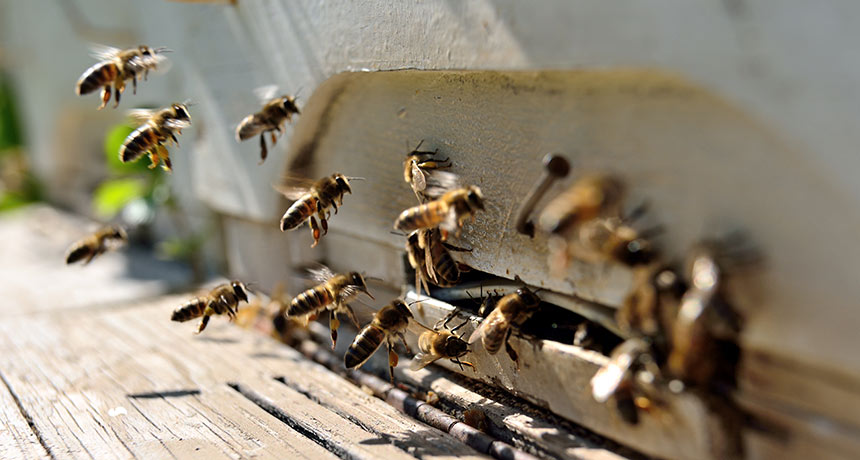How bees defend against some controversial insecticides
Researchers have discovered enzymes that can help resist some neonicotinoids

WHAT’S THE BUZZ Honeybees (shown) and bumblebees can resist a type of neonicotinoid insecticide thanks to a family of enzymes that metabolize toxic compounds.
Bayer Bee Care Center